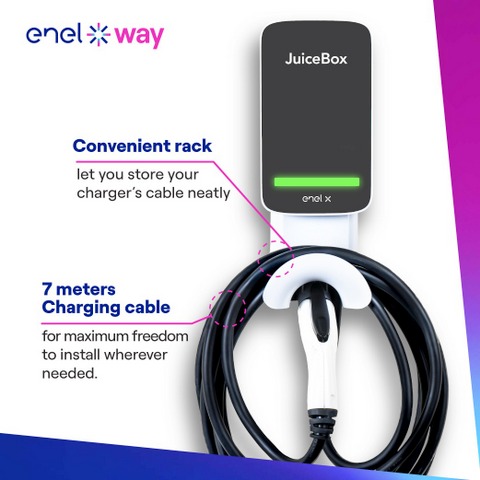Dealing with a Defunct Charger Company
In October, Enel X Way North America announced that it would cease its operations, leaving the company’s JuiceBox EV charger users cut off from software functionality. While server operations will continue for an indeterminate period and battery charging capabilities are still active, the company maintains that they will seek a long-term solution (yet to be disclosed).
Although this news is not exactly reassuring to those with JuiceBox charge stations, it means that there is still time to migrate Enel X Way JuiceBox 40 EV chargers to a new charge station management system (CSMS). No charging functionality has been lost yet, but that’s only a question of time. Given the uncertainty, it’s important to make a sound plan for long-term success to guard against the risk and possibility that Enel X Way servers will shut down permanently.
Here are three viable ways forward for JuiceBox system owners:

1. OCPP Platform Migration
Dozens of OCPP-based charge station management platforms have come out of the woodwork since the news of Enel X’s withdrawal from the North American market. The companies behind them are making various claims about their ability to help desperate system owners move the management of their JuiceBox chargers to a new cloud management platform. Some of these companies are genuinely prepared and have processes in place to manage such a migration. But many are not.
Many users will be tempted by these CSMS provider claims due to their low cost and apparent simplicity–but they are not without potential pitfalls. Among them:
- Partner risk. What credentials and track record does the solution provider have? How long have they been in business, and can you be certain they will be there to support you long after you transition to their platform? If your charger is repointed to a third-party’s OCPP server and the Enel X backend service is discontinued, it’s possible that you will not be able to migrate again. If a migration is unsuccessful, you could be left in a worse situation than before. Therefore, choose a partner that provides a guarantee or warranty for their services.
- Hidden cost. Credible software-only vendors offering migration services will probably require onsite personnel to update firmware for each charger in your network. This will involve electricians or technicians working billable hours. Be sure you understand what’s involved in migration, apart from a new SaaS subscription, before going this route.
- Stability. OCPP platform migration could result in new quirks and undesirable behaviors. Your equipment will be running experimental, potentially unstable firmware, connected to a third-party server via Wi-Fi, with no official customer service available.

2. Rip and Replace
For some organizations, it may be worth the time and expense of tearing out their Enel X equipment and replacing it completely–but consider all costs first. Most equipment providers on the market charge more than Enel X did for services. This approach is by far the most expensive, requiring significant equipment and labor expense in addition to a new service subscription.
3. Hardware-Based Charge Station Management Systems (CSMS)
The best of both worlds can be achieved with hardware-based CSMS solutions: by retrofitting existing JuiceBox systems, users can keep the hardware and avoid altering firmware of each individual system (both costly, time-consuming processes).
A hardware-based CSMS not only protects your hardware investment, but re-enables the now-lost access control, user management, monetization and reporting features that EV charge station managers need to maintain efficient and cost-effective operations. This approach also offers the following benefits:
- Trustworthy partners. Only a handful of EVSE providers offer hardware-based CSMS solutions, and those that do have stood the test of time. For example, Liberty Plugins has been in business since 2009.
- Approachable cost structure. Most hardware-based CSMS solutions are tailored to workplaces and multi-unit apartments, where users need to control access to chargers and bill for use, but don’t want or need to profit from their charging.
- Flexible and upgradeable. Every EV charger has a lifespan, so when it’s time to replace a JuiceBox or any other system, you can do so without changing how you manage your charging system. As a bonus, you can add more chargers of any type, whether Level 2 or DC fast chargers.
As the initial shock wears off for JuiceBox users, it’s important to consider all of the options for a cost-effective, long-term plan for maintaining charge station operations. The cons tend to outweigh the pros of migrating to cloud platforms, or entirely replacing systems, but retrofitting JuiceBox systems to a hardware-based CSMS enables greater control, flexibility and, above all, reliability.

4 thoughts on “Abandoned No More: 3 Options for Enel X Way Charge Station Operators”